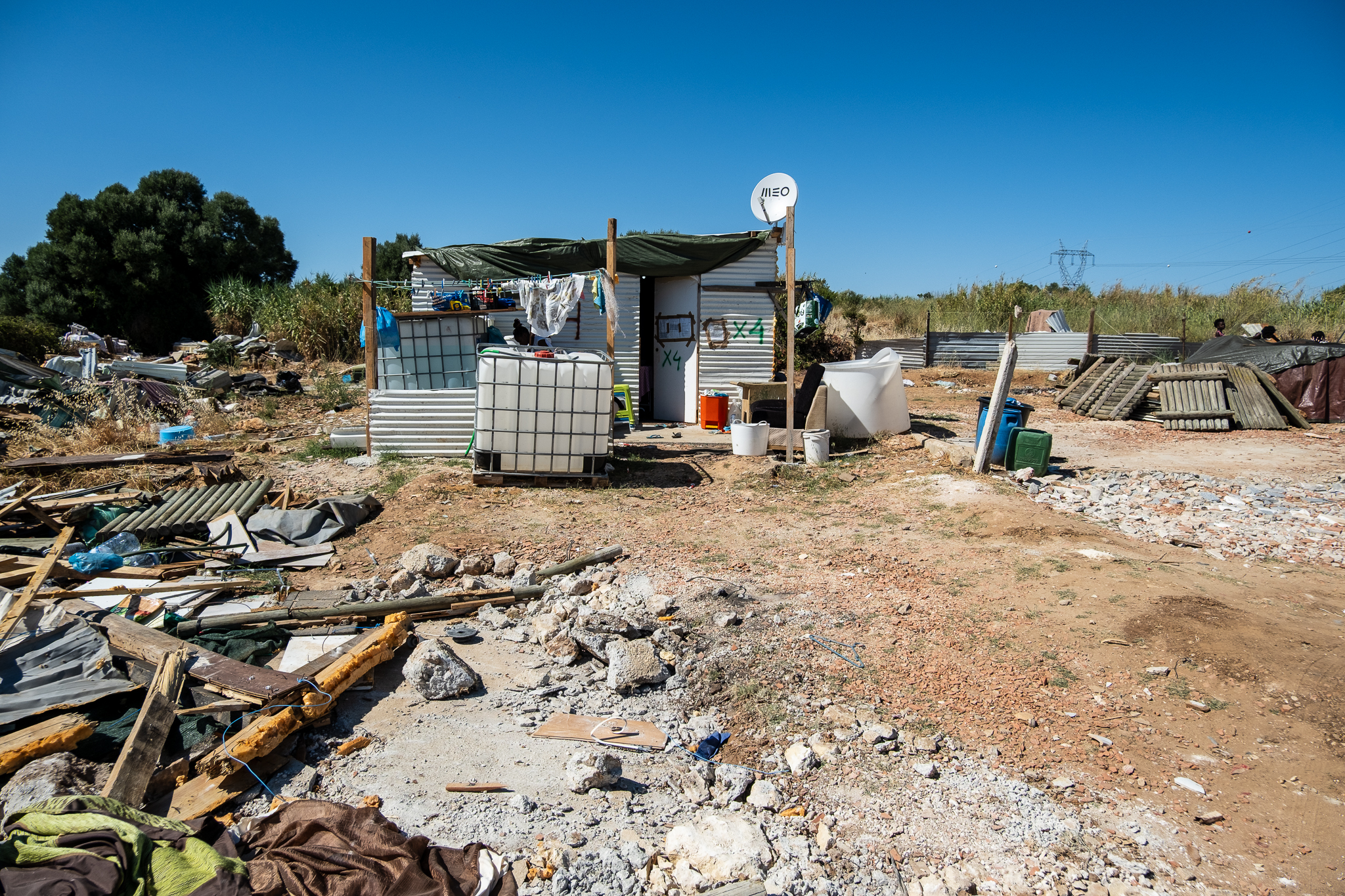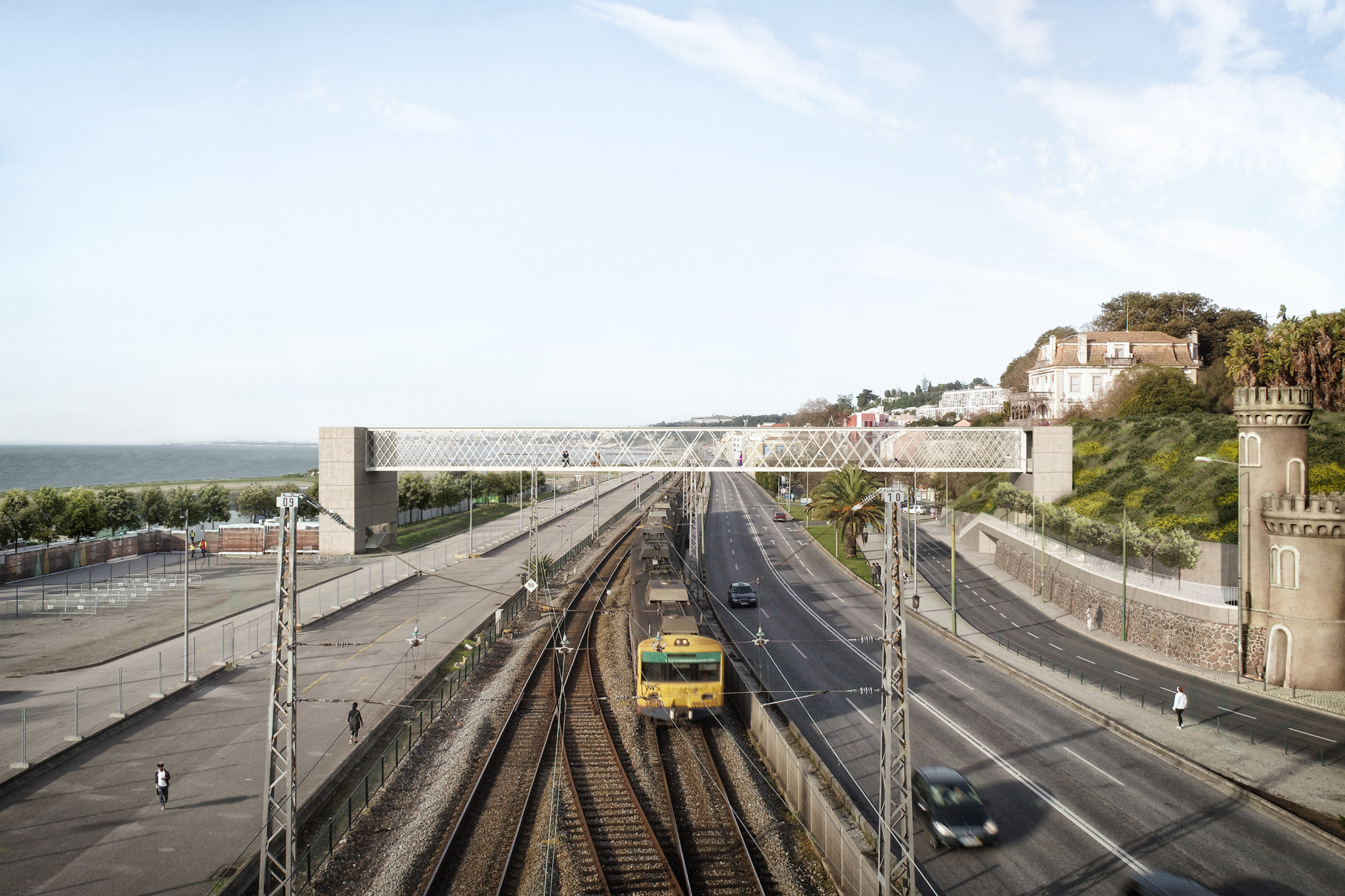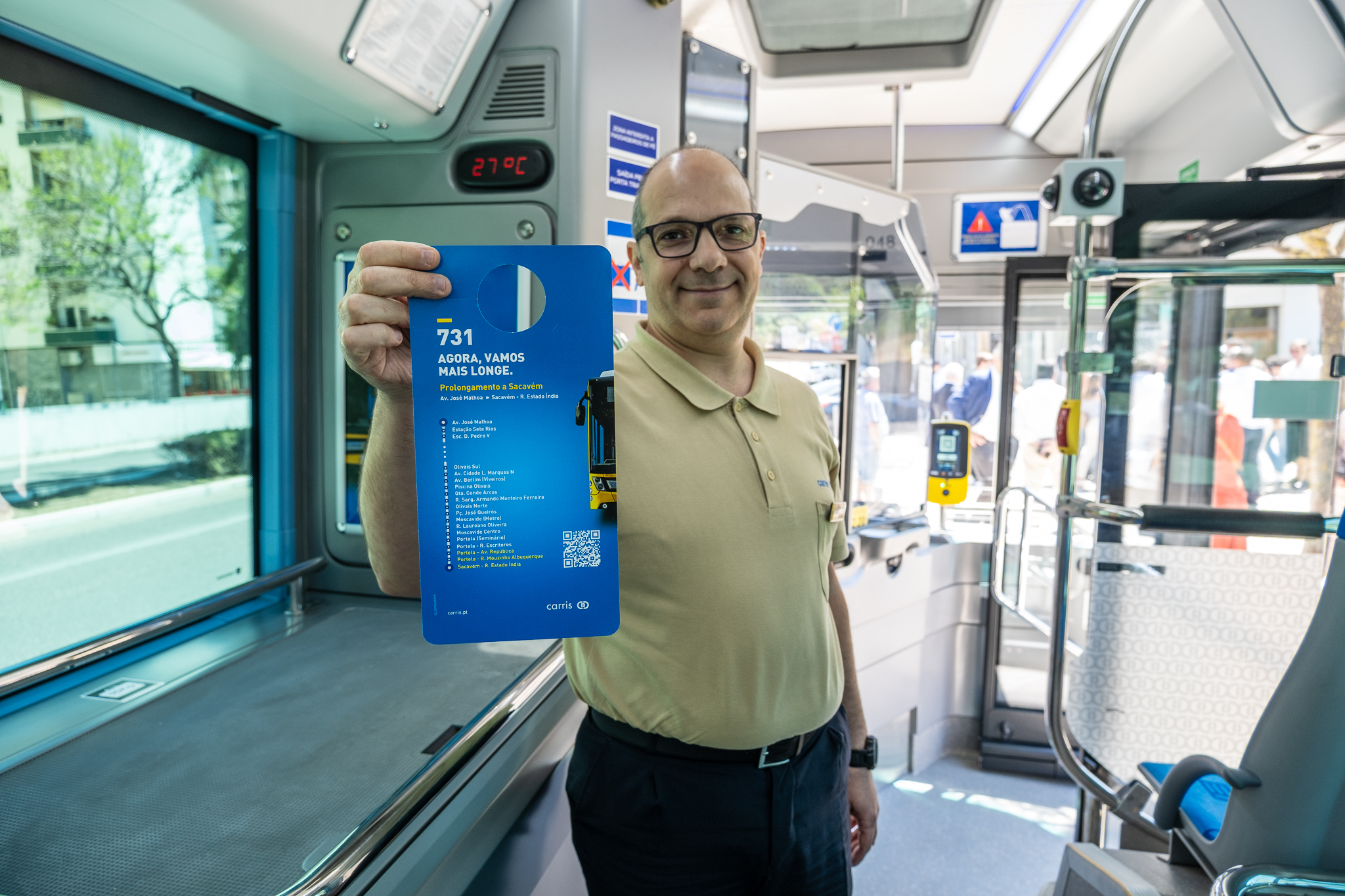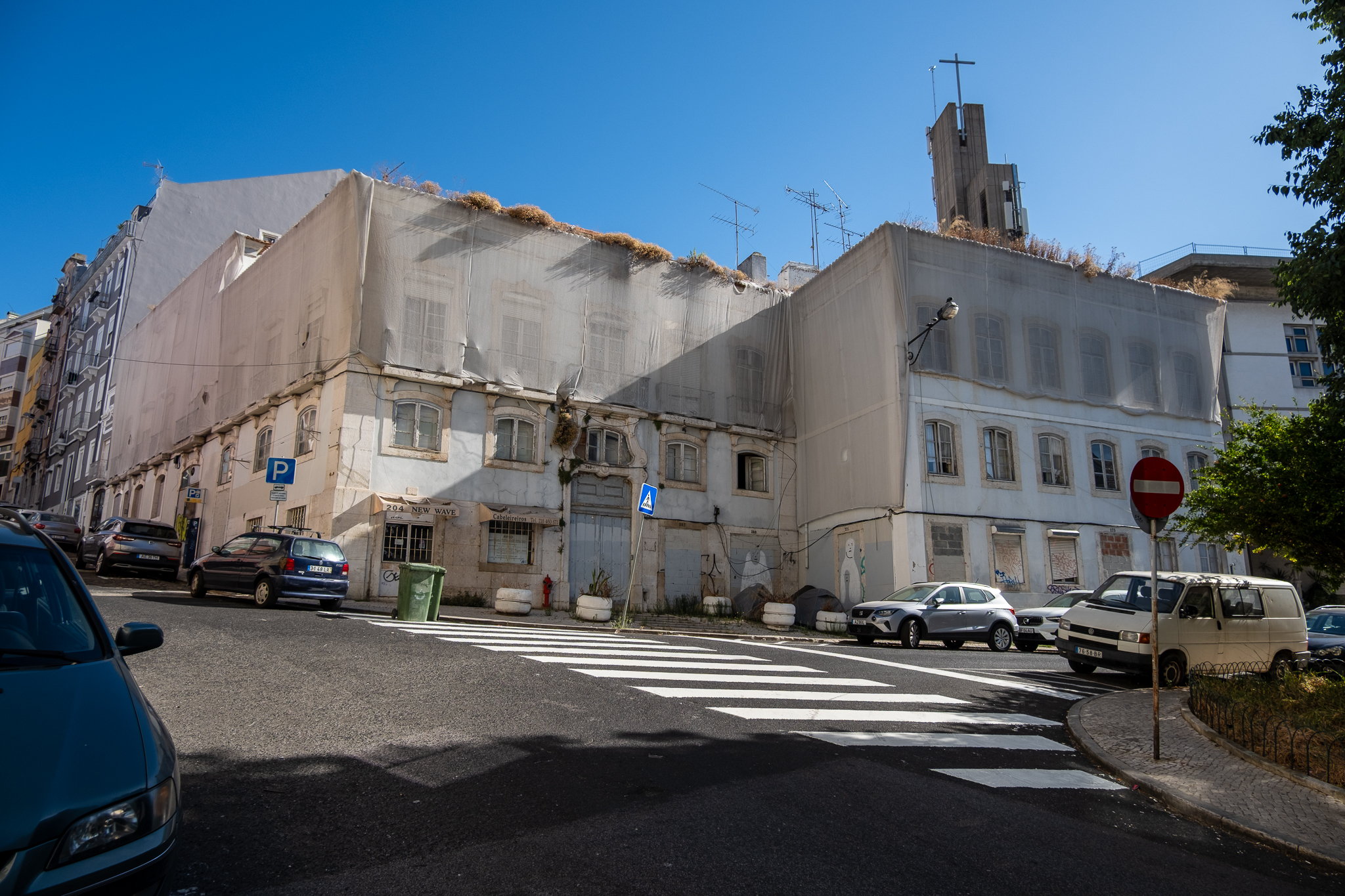It's too short, it's too narrow, it's narrowed the BUS corridor and it puts bicycles on sidewalks. This is the new bike lane on Avenida de Berna.

It's short: it's only 220 meters long on an avenue that's almost a kilometer long. It's narrow, too narrow: only 1.80 meters wide. It forces cyclists to ride on the sidewalk and cross crosswalks, leading to conflicts with pedestrians. And it has forced the width of the bus lane to be reduced, squeezing buses against bicycles. Lisbon City Hall is altering the Avenida de Berna cycle path to reduce it to one block and reintroduce 70 car parking spaces - a solution that seeks to establish a commitment between car and bicycle users. But it's actually a solution that crushes buses, bicycles and pedestrians, without harming the car.
A work on Avenida de Berna not yet completedBut you can already see the results of the intervention underway on this important axis, which connects the Plaza de España to the Avenida de República and which is one of the city's most polluted avenuesaccording to data from the municipality.
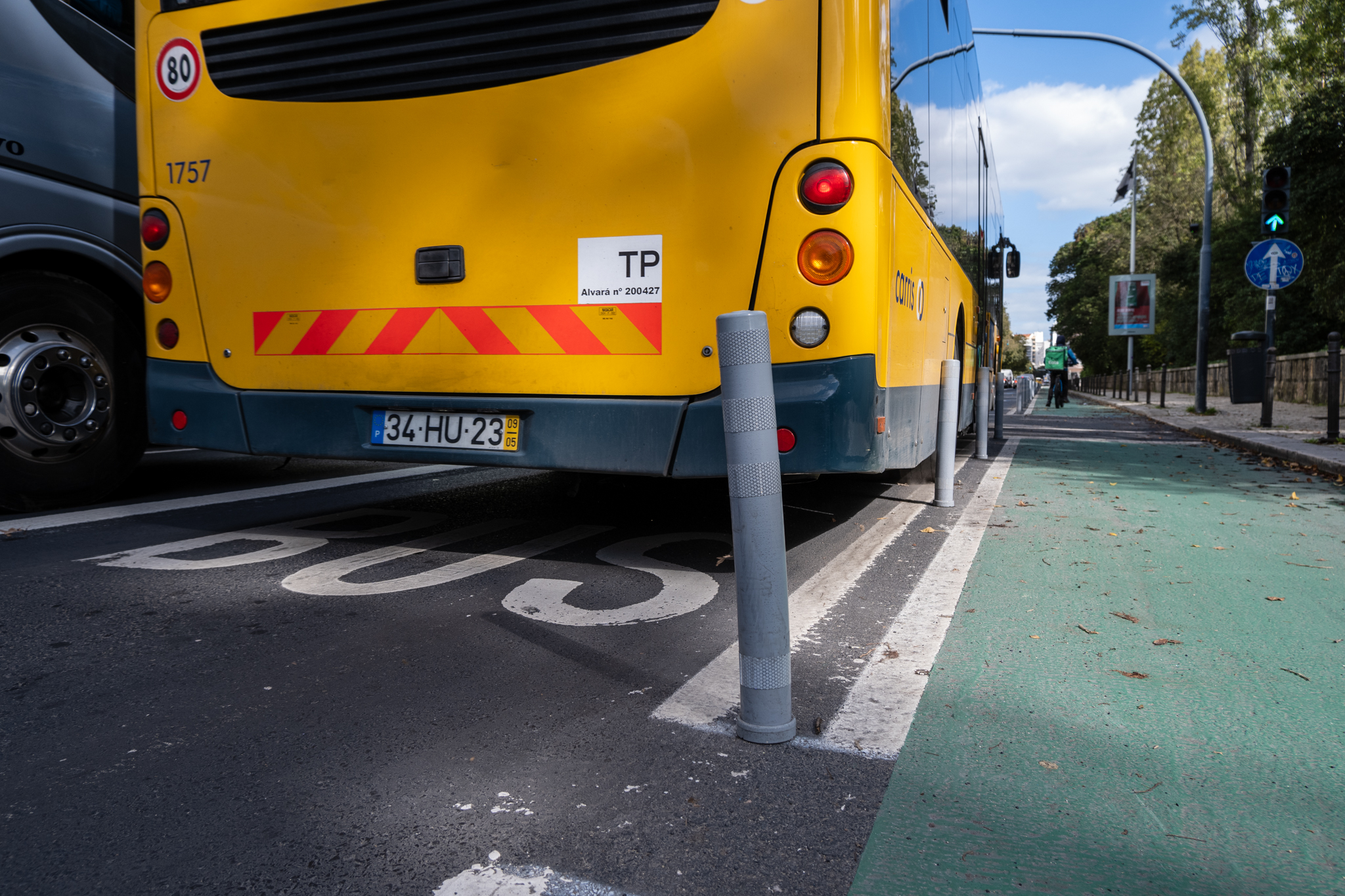
The new cycle route runs along just down the block from Gulbenkianbetween the bi-directional cycle path in the Plaza de España and the Azeredo Perdigão Square. At this point, the route enters the neighborhood, making it possible to take the existing 30+ bike path from Avenida Elias Garcia to Avenida da República. As a result, cyclists no longer have a direct connection, without detours, along the Avenue de BerneInstead, they are driven into inner, shared corridors, where they not only have to deal with motorists (who don't always respect the 30 km/h limit), but are also forced into longer journey times due to the existence of several traffic-light junctions that are out of sync with each other;
The route is now about 440 meters long. Nearly half of these meters are shared between bicycles and pedestrians; only 220 meters are a proper cycle path - bidirectional, segregated, at road level. In fact, the changes made to this axis put cyclists on the sidewalk and crossing crosswalks both near Praça de Espanha and in Largo Azeredo Perdigão. These shared sidewalk areas can cause conflicts between walkers and cyclists, mainly due to the existence of some narrow sections with poor visibility.
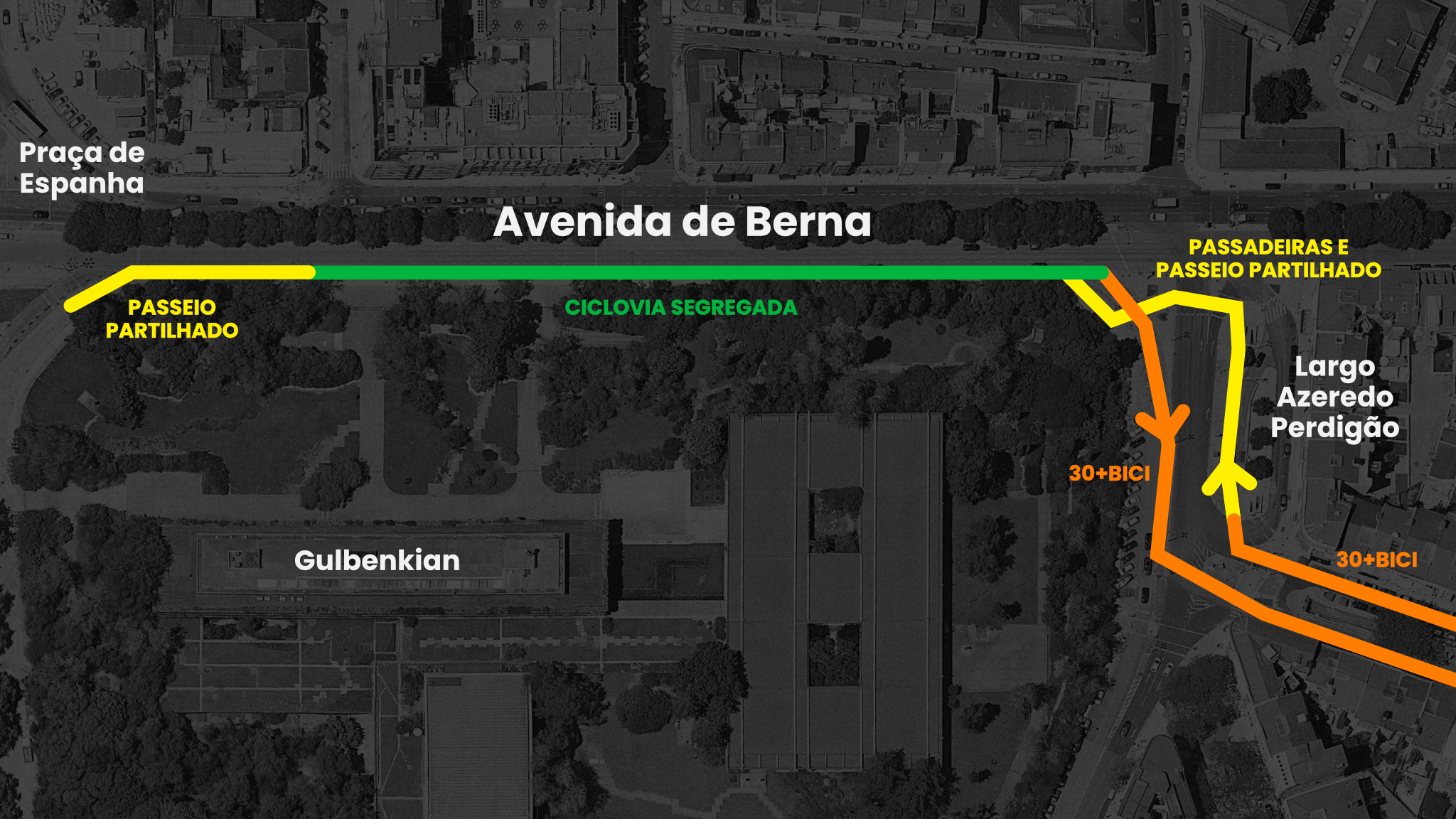
It should be remembered that the cycle path implemented in 2021 had been criticized for bringing pedestrians and cyclists into conflict. The changes that have now been implemented have not only failed to solve this problem, but have intensified the situation, contrary to manuals and regulations. O Lisbon Municipal Urbanization and Building Regulations (RMUEL), for example, is quite clear: "Coexistence with pedestrians should be avoided, except in the coexistence zones provided for in the Highway Code, giving priority to pedestrians and avoiding situations of conflict or ambiguity in public space design solutions."
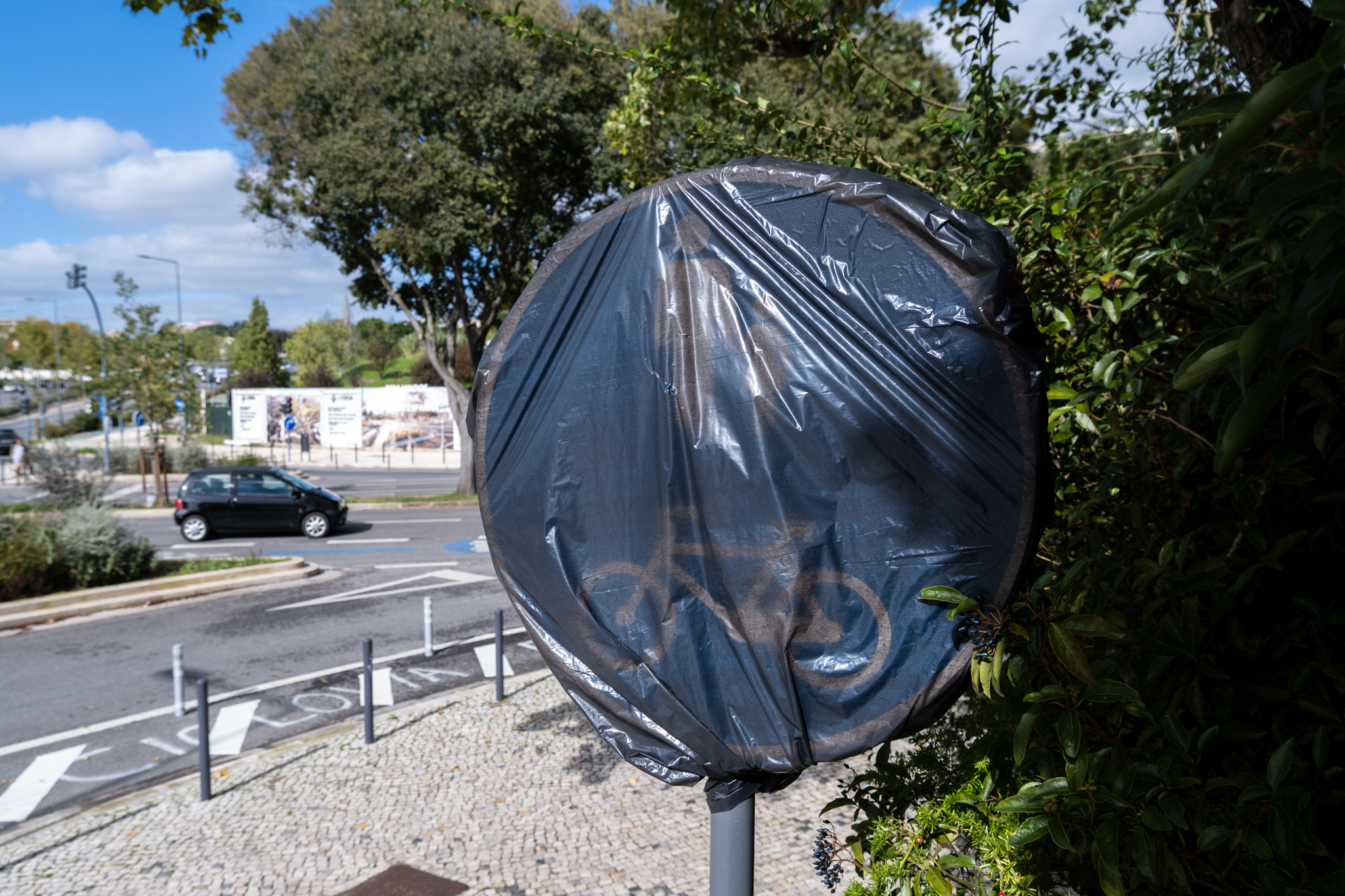
As for the section of cycle path itself, it is narrow, very narrow: conta only 1.80 meters wideAccording to measurements carried out by LPP, this is not enough for two bicycles to pass each other comfortably and safely.
Lisbon City Council's Public Space Manual recommends 2.40 meters minimum width for bidirectional cycle paths, which in ideal situations should be 2.60 meters. Exceptionally, the cycle path may only be 2.20 meters - but no less. The Institute of Mobility and Transport (IMT) is also clear in its manual: 1.80 meters is not a safe and comfortable bidirectional cycle path for those who travel on it. The RMUEL also leaves no doubt as to the "minimum dimensions" of cycling routes:
a) 1.50 meters on unidirectional cycle paths, exceptionally allowing a minimum of 1.20 meters whenever it is not possible to adopt the current minimum value and provided that user safety is guaranteed;
b) 2.60 meters on bidirectional cycle paths, exceptionally allowing a minimum of 2.20 meters whenever it is not possible to adopt the current minimum value and provided that user safety is guaranteed;
c) 0.80 meters of protection channel for the cycle path, exceptionally allowing a minimum of 0.60 meters when it is not possible to adopt the current minimum value and provided that the safety of users is safeguarded.
- Lisbon Municipal Urbanization and Building Regulations (RMUEL)
Narrow cycle path, narrow buffer, narrow BUS

The new cycle path pits its users against each other in a space just 1.80 meters wide, but also against buses and other motorized traffic. On the one hand, the buffer of protection is between 0.30 and 0.40 meters, according to LPP's measurements, which is half of what the council itself recommends.
On the other hand, the change in the cycle path from one-way to two-way led to the narrowing of the carriageway to the detriment of the rightmost lane, next to the cycle channel. This road now has only 2.80 metersaccording to the measurements that LPP also carried out. On an avenue like Berne, which is listed in the PDM (Municipal Master Plan) as a 2nd level avenue, this width is illegal. On any 2nd level road, traffic lanes must be at least 3.00 meters wide; and if the lane is a BUS lane, as is the case here, the minimum width is 3.25 meters, the ideal is 3.50 meters. It is therefore not surprising that buses 2.50 meters wide find it difficult to circulate on that stretch of Avenida de Berne if they have no room to maneuver on the left.
The work that has now been carried out has other problems, such as leaving one of the poles of the Faculty of Social Sciences and Humanities (FCSH) at Universidade Nova disconnected from the cycle network once again, or providing cyclists with a longer route. If you want to go from Avenida da República to Praça de Espanha that way, instead of a more or less direct route with only a few traffic light interruptions, you'll have to stop three times at three time-consuming traffic lights just to get to Largo Azeredo Perdigão; and here you'll have to cross four crosswalks four times - not always with a green light - to get to the segregated section. In the opposite direction, the route is equally uncomfortable, although you don't have to cycle through so many supposedly pedestrian crossings.
MUBi and ZERO intensify complaint to Public Prosecutor's Office

MUBi, an association that advocates the use of bicycles in urban environments, is concerned about the changes to the Avenida de Berna and accuses Carlos Moedas' government of "making an 'alternative reality' misinformation by claiming that the Avenida de Berna cycle path is being removed after all"but improving it. The City Council - MUBi told LPP - is "removing two thirds (2/3) of the bicycle lane and proposing, on one third (1/3) of the avenue, a bicycle lane with illegal dimensions and, in addition, forcing people on bicycles to use the sidewalk". The association also says that by directing the bikes to the sidewalk, it is clear that "this work was never aimed at pedestrian safety, but only at giving space back to cars".
Remember, together with the environmental association ZERO, MUBi filed a complaint with the Public Prosecutor's Office at the end of October. complaint against Lisbon City Council over work on Avenida de Bernaclaiming that it violates the PDM, contradicts the city's strategy and distances us from the international commitments signed by the municipality. Now, after seeing the work on the ground, the two associations have decided to present an addendum to the complaint document, taking into account the size of the section of cycle path being created, and the apparent lack of a closed execution project and the Term of Responsibility signed by a competent technician, as is required in any public or private work.
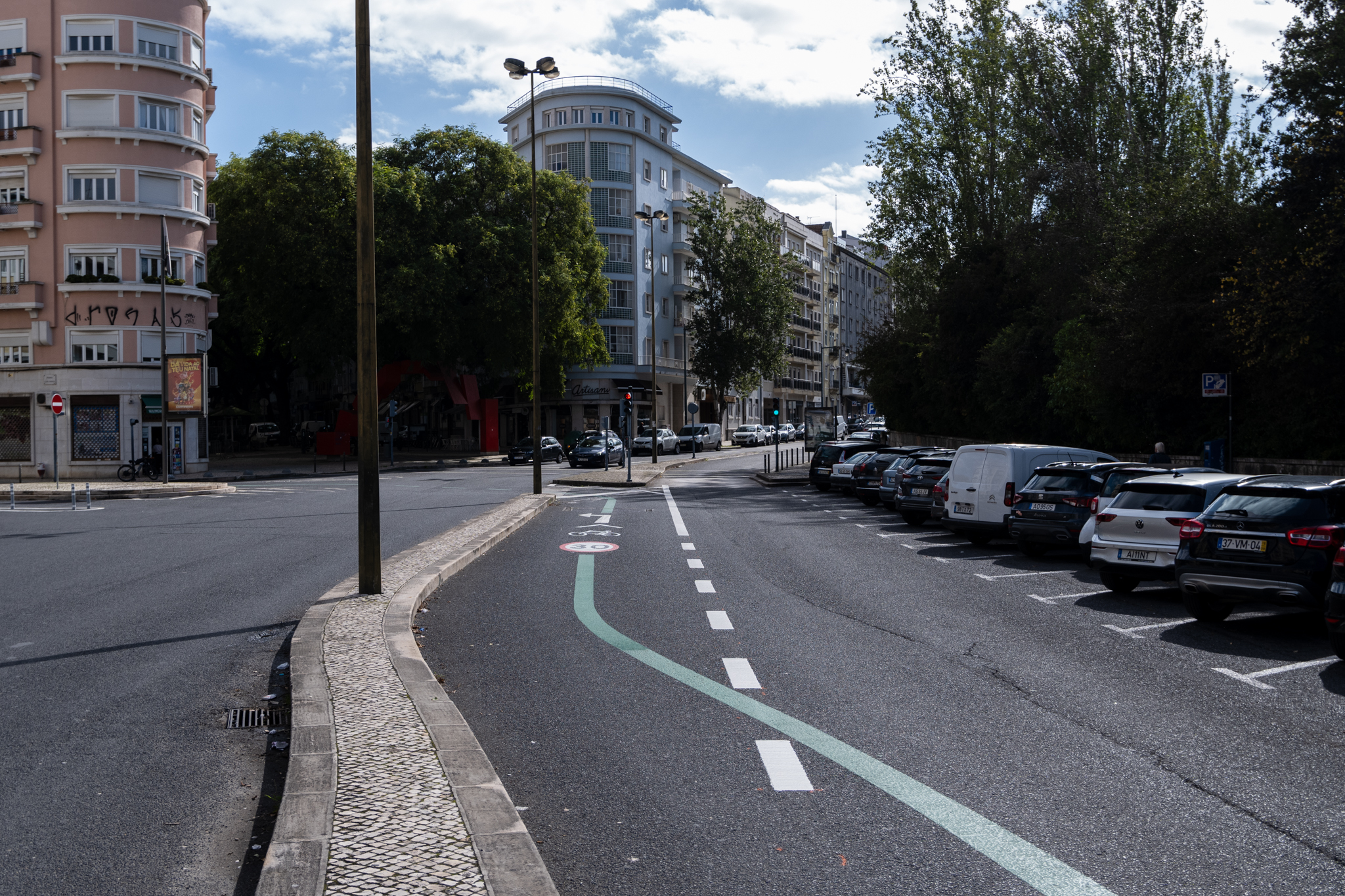
"In short: the work being carried out leaves 2/3 of Avenida de Berna without any cycling infrastructure and creates a cycle path in 1/3 of the avenue whose width is not even close to the regulatory dimensions, alongside a buffer and a BUS lane that are also grossly irregular and insufficient, unequivocally endangering those who cycle on Avenida de Berna, both in the cycle section now being carried out and in the one where there will be no cycling infrastructure. There are strong indications that the work is being carried out without a closed project or Terms of Responsibility signed by a competent technician, given the successive contradictions on the part of CML and the gross irregularities that can be observed on the ground."This can be read in the addendum signed by MUBi and ZERO and sent to the Public Prosecutor's Office on November 3. "These facts make stopping the work even more urgent."
The work hasn't stopped. It continued and should be finished by the end of November.
Can the House go back?
Meanwhile, Lisbon City Council seems to be aware of the criticism and is willing to review the project. In a statement to Antena 1 radio, the Municipal Mobility Director, Ana Raimundo.., said on October 31 that, "in the final project, we will have the extension of the two-way cycle path to Avenida da República, thus restoring two-way traffic and the separation of the cycle path along Avenida de Berna". These statements contradict the project that was known at the time, which shows a bidirectional cycle path between Praça de Espanha and the FCSH/Igreja block. A few days after these statements, in a private meeting of the City Council, the Vice-President, Filipe Anacoreta Correia, responsible for Mobility, denied the change of plans mentioned by Ana Raimundo.
Later, at a conference held by Público newspaper and ZERO, the Municipal Mobility Director.., he clarified: “The definitive cycle path is a project that is still being developed and which will be consulted by the residents, so that we can accommodate the suggestions of those who live there and those who use it. The route hasn't been completely finalized yet. We've been analyzing whether we can put in a two-way route up to Avenida da Republica, but it's not a done deal yet. I can't say whether it will be like that or not."
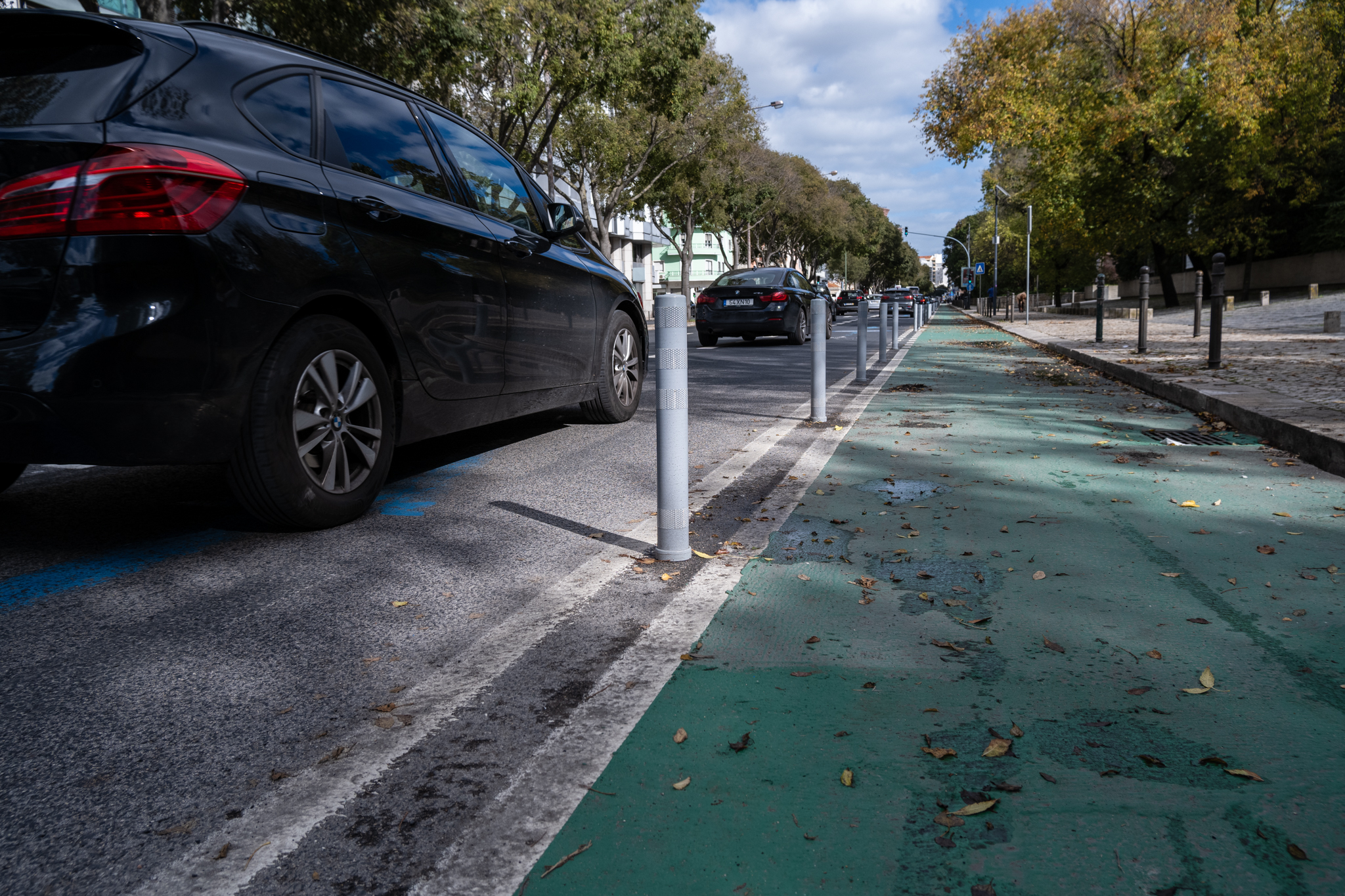
Questioned by LPP, a source from Lisbon City Hall confirmed that "definitive solution" for the Avenue de Berne is still under development. "developed" by the municipal services, and that "there has been no change of plans". "Work is currently underway to redesign the cycle path, using a temporary solution, which will allow improvements to be made to the public transport lay-bys along Avenida de Berna, as well as to pedestrian accessibility, particularly for people with reduced mobility. This first phase will also see the creation of loading and unloading zones and pockets for night-time residents."the municipality also said. The temporary solution will cost 62,000 euros, while the permanent solution, scheduled for 2024, is estimated to cost a further 450,000 euros. In total, that's half a million just to make and unmake.
After being elected, Carlos Moedas said he was "very important" have bike lanes and that people use them. "But what I want is cycle paths that are safe"he stressed at the time. "I would be afraid today for my children to use certain cycle paths." The mayor has therefore decided to commission an audit of the city's entire cycling network from renowned Danish consultancy Copenhagenize - a job that is in the process of being completed.
But on the Avenida de Berna, the municipality decided to go ahead with changing the cycle path without the closed audit, pressured by the Avenidas Novas Parish Council, which wants the removed parking lot to be replaced in 2021. The result is a cycle path that does not comply with the city's own manuals and regulations; a cycle path that squeezes cyclists, buses and pedestrians, but leaves space for car traffic or parking.

